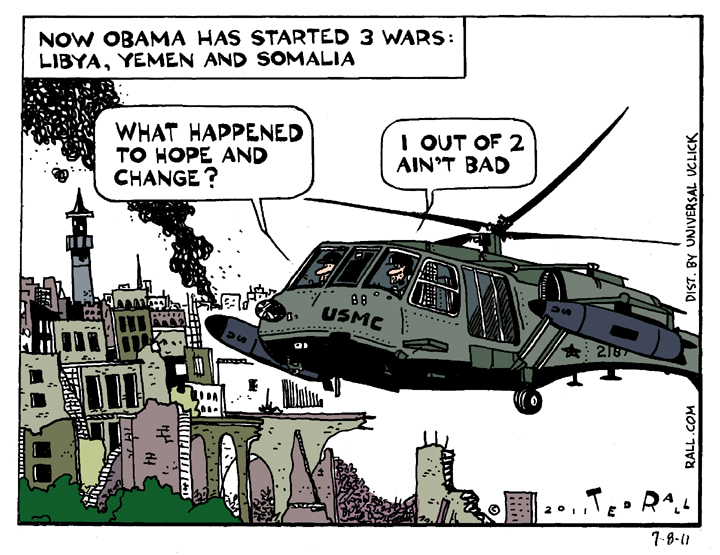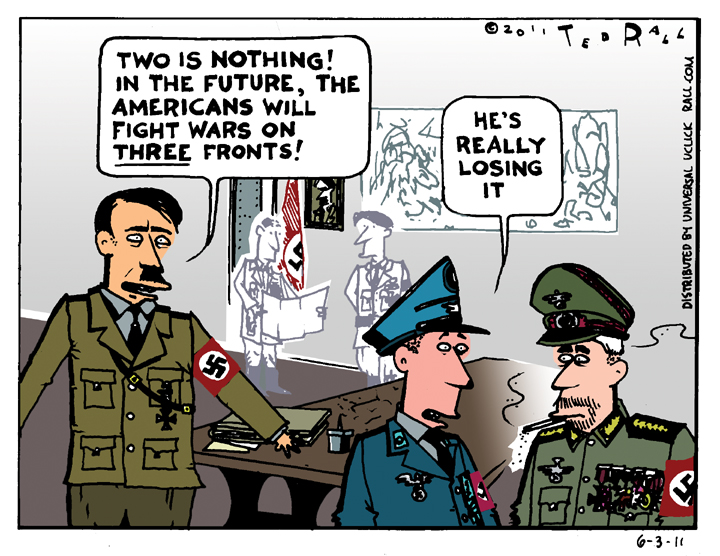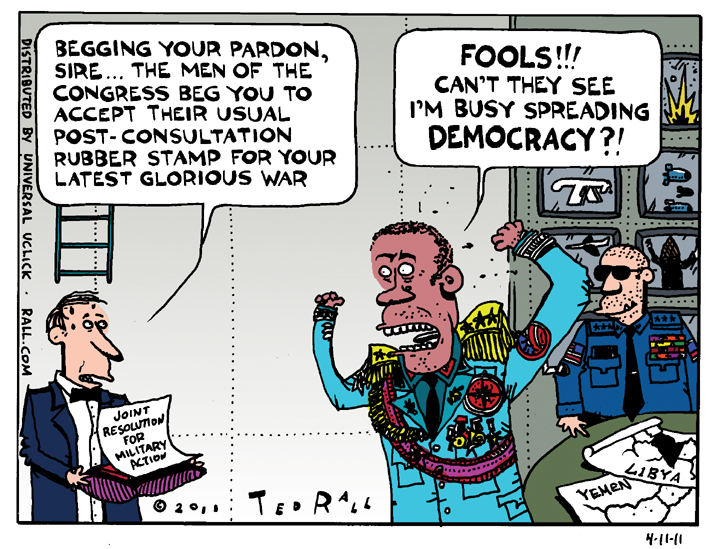One of the pleasures of traveling through the developing world is that things develop. They change. There’s always something new.
Afghanistan is, depending on one’s point of view, developing, deteriorating, or doing both at once.
Example: Last August found me and two fellow Americans in a hired taxi zooming past bombed-out fuel trucks through Taliban-held Kunduz, a city in northern Afghanistan near the Tajik border. The sense of menace was palpable, but our driver seemed calm.
Then his face darkened. We were passing into the flatlands east of Mazar-i-Sharif. We saw nothing but dirt, dust and rocks, all the way to the horizon. Yet our driver was nervous. He scanned this bleak landscape. “Motorcycles,” he said. “I am looking for the motorcycles.”
The adaptable neo-Taliban increasingly rely on the classic tactics of guerilla warfare. Rather than hold territory, these postmodern Islamists-cum-gangsters rely on hit-and-run strikes using something I hadn’t seen in 2001: motorcycles. Like a scene from the Kazakh film epic about Genghis Khan updated by Quentin Tarantino, squadrons of bearded bikers are terrorizing Afghanistan’s newly/cheaply paved highways.
I call them the Talibikers.
One of the more intriguing revelations in last year’s WikiLeaks data dump was that the Pakistan’s Inter-Services Intelligence spy agency has been supplying the Taliban with thousands of Pamir dirtbikes, including a 2007 shipment of 1,000 to the Waziristan-based network led by Mawlawi Jalaludin Haqqani. Talibs ride the Pamirs and their preferred brand, the Honda 125 and its Chinese knock-offs, to assassinations. They launch attacks on highways from bases in villages 10 to 15 kilometers away.
The Talibikers speed across the desert in great clouds of dust, “Mad Max” style, to ambush and bomb fuel trucks. There they set up checkpoints where they shakedown travelers for cash. Sometimes they kidnap motorists and demand ransom payments from their families. By the time the hapless Afghan national police shows up, the resistance fighters are long gone.
An early report on the Talibikers appeared in the Telegraph in 2003. “The motorcycles have played a key role in Taliban hit-and-run operations in the south of the country where the campaign against international troops and aid workers has intensified,” the British newspaper reported in November of that year. “In the latest incident, a Frenchwoman working for the United Nations was shot dead this month by the pillion passenger on a motorcycle in the south-eastern town of Ghazni. The Taliban later claimed responsibility for the attack. In another recent attack, a group of motorcyclists opened fire on an aid convoy near Kandahar, killing four Afghans. In August, two motorcyclists threw a grenade into the Kandahar compound of the United Nations High Commissioner for Refugees, damaging the building but causing no injuries.”
ISI-funded motorbikes continue to play a vital role in the Taliban’s war to drive U.S. and NATO occupation troops out of Afghanistan. “Day and night, Taliban assassins on motorbikes hunt their victims, often taunting them over the telephone before gunning them down in the city’s streets,” Paul Watson wrote in The Star, a newspaper in Canada in February 2011. “They are working their way through lists, meticulously killing off people fingered as collaborators with the Afghan government or its foreign backers…The build-up of Afghan police and soldiers, and foreign troops, in and around Kandahar city over recent months has improved security, but agile and coldly efficient motorbike death squads remain active.”
Mass attacks continue as well. “About 100 Taliban fighters on motorcycles attacked a northern Afghan village that was working to join the government-sponsored local police program against the insurgency, killing one villager, police said Wednesday. An ensuing battle also left 17 militants dead,” the Associated Press reported in May 2011.
There are fewer than 10,000 Talibikers in Afghanistan. They could be eliminated—if the U.S. and NATO stopped focusing on assassination-by-drone and instead used the same technology to increase security.
Unmanned aerial vehicles (UAVs) date to the maiden flight of the now-familiar Predator drones in 1994. After 9/11 the United States became addicted to the Predator and its successor, the Reaper.
Today the Air Force and CIA have at least 7000 UAVs in service around the world, representing the biggest and most visible presence of the U.S. military in Pakistan, Somalia, Libya, and Yemen. This trend is likely to accelerate. As of March 2011 the U.S. Air Force was training more remote drone “pilots” than those for conventional planes. Next year the Pentagon wants $5 billion just for drones.
Drones are getting smaller and more numerous. “One of the smallest drones in use on the battlefield is the three-foot-long Raven, which troops in Afghanistan toss by hand like a model airplane to peer over the next hill,” according to The New York Times. “There are some 4,800 Ravens in operation in the Army, although plenty get lost.” More on this later.
It’s easy to see why generals and politicians are so enthusiastic. The pilotless planes, guided by operators manning a joystick at military and pseudomilitary agencies such as CIA headquarters in Langley, Virginia and armed by Xe, the private contractor formerly called Blackwater, are relatively cheap. A Predator costs $4.5 million; an F-22 Raptor fighter jet runs $150 million a unit. Peter Singer, director of the 21st Century Defense Initiative at the Brookings Institution, cites the “three Ds.” Drones are “dull” because they can patrol empty stretches of barren land 24 hours a day. They’re “dirty” because they can fly in and out of toxic clouds, including radiation. Most appealingly, they are “dangerous” because the absence of a pilot eliminates the risk that a pilot—they cost millions to train–will be killed or captured by enemy forces. UAVs exploit the element of surprise: though relatively unobtrusive, they fire supersonic armor-piercing Hellfire missiles capable of striking a target as far as five miles away.
“People who have seen an air strike live on a monitor described it as both awe-inspiring and horrifying,” The New Yorker magazine reported in 2009. “‘You could see these little figures scurrying, and the explosion going off, and when the smoke cleared there was just rubble and charred stuff,’ a former C.I.A. officer who was based in Afghanistan after September 11th says of one attack. (He watched the carnage on a small monitor in the field.) [Bleeding] human beings running for cover are such a common sight that they have inspired a slang term: ‘squirters.'”
Charming.
According to the Pentagon, drones hit their targets with 95 percent accuracy. The problematic question is: who are their targets?
Thousands of people have been rubbed out by drones since 9/11.
(Press accounts document between 1400 and 2300 extrajudicial killings by allied forces, mostly in the Tribal Areas adjacent to Pakistan’s Northwest Frontier Province. According to media reports cited by the Human Rights Commission of Pakistan, at least 957 Pakistanis were murdered by American drones in 134 airstrikes during the year 2010 alone. Since the media only learns about a fraction of these “secret” killings, the real number must be many times higher.)
Since the Pakistani government does not officially acknowledge, much less authorize, such attacks, they are illegal acts of war.
Political philosopher Michael Walzer asked in 2009: “Under what code does the CIA operate? I don’t know. There should be a limited, finite group of people who are targets, and that list should be publicly defensible and available. Instead, it’s not being publicly defended. People are being killed, and we generally require some public justification when we go about killing people.”
One would think.
Legal or not, Christine Fair of Georgetown University says the U.S. doesn’t use drone planes indiscriminately: “You have lawyers, you have targeteers, you have intelligence operatives, you actually have pilots who are manning the drones. These are not 14-year-old kids right out of basic training, playing around with a joystick,” she told National Public Radio.
In the real world, it’s often hard to tell the difference. There’s no doubt that drone operators make mistakes. In April 2011, for example, two American marines were killed by a Predator in Afghanistan.
Of course, the majority of victims are local civilians. In Afghanistan and Pakistan drone strikes have killed countless children and wiped out so many wedding parties that it’s become a sick joke. Estimates of the civilian casualty rate range from a third (by the New America Foundation) to 98 percent (terrorism expert Amir Mir). There is no evidence that a single “terrorist” has ever been killed by a drone—only the say-so of U.S. and NATO spokesmen.
Errors are inherent due to the principal feature of the technology: remoteness. Manned aerial warfare is notoriously inaccurate; pilots zooming close to the speed of sound tens of thousands of feet above the ground have little idea who or what they’re shooting at. Drone operators have even less information than old-school pilots. Like a submariner peering out of a periscope, they are supposed to decide whether people live or die based on fuzzy images through layers of glass. They call it the “soda straw.”
Nowadays, staffing is a troubling challenge: it takes 19 analysts to study images and other data from one drone. In the future, a war could eliminate unemployment entirely: it will take approximately 2000 men and women to process information from one drone equipped with “Gorgon stare” optics capable of scanning an entire city at once.
There’s also a huge gap in education, experience and culture. Virtual warriors require simple rules that don’t apply when trying to kill jihadis. At the beginning of the U.S. war against Afghanistan in 2001, for example, it was an article of faith within the Pentagon that men wearing black long-tailed turbans were Talibs. Dozens, possibly hundreds, of noncombatants were killed because of this incorrect assumption. In February 2002 a drone operator blew up a man because he was tall—as was Osama bin Laden. In fact, he and two other men killed were poor villagers gathering scrap metal. Again, this doesn’t address the broader issue of whether it’s OK to murder people simply because they are members of the Taliban.
At least as interesting as the choice of target is whom the U.S. does not try to kill: the Talibikers.
Unlike the wedding parties, houses and tribal councils that have been mistakenly incinerated by the aptly-named Hellfire missiles, Taliban bike gangs are easy to identify from the air. One or two hundred dirtbikes speeding across the desert toward a truck on an Afghan highway are unmistakable. Most Afghans, even those who oppose the U.S. occupation, fear the Talibikers and resent being robbed at impromptu checkpoints. There have been a few scattershot drone strikes, nothing more. Why don’t the CIA whiz kids make these easily identified fighters a primary target?
I posed the question to Afghan government officials. They told me that the same U.S. military that blows $1 billion a week on the war won’t lift a finger to save Afghan lives by providing basic security. “Afghan lives are worth nothing to the Americans,” a provincial governor told me.
Last week the United Nations announced that civilian casualties were up 15 percent during the first six months of 2011. If the same rate continues, this will be the worst year of the ten-year-long American occupation.
A well-placed U.S. military source confirms that Afghan security “isn’t a priority, it isn’t even much of a passing thought.” Contrary to President Obama’s claim that U.S. is in Afghanistan in order to prevent the country from becoming a base for Al Qaeda and other extremist groups and to combat opium cultivation, he says that Afghanistan isn’t about Afghanistan at all. “Afghanistan is a staging area for drone and other aerial strikes in western Pakistan,” he says. “Nothing more, nothing less. Afghanistan is Bagram [airbase].”
Under Obama the death toll has risen, worsening relations between the White House and its puppet president, Hamid Karzai. Beyond the horror of the deaths themselves, it would be impossible to overstate the contempt that ordinary people in nations like Afghanistan and Pakistan feel for the drone program. “Americans are cowards” was one refrain I heard last year. Real soldiers risk their lives. They do not send buzzing machines to kill people half a world away…people they know nothing about.
Back in 2002, former CIA general counsel Jeffrey Smith worried about blowback. “If [Taliban leaders and soldiers are] dead, they’re not talking to you, and you create more martyrs,” he noted. Ongoing drone attacks “suggest that it’s acceptable behavior to assassinate people…Assassination as a norm of international conduct exposes American leaders and Americans overseas.”
These days, the media gives little to no time or space to such concerns. Americans have moved into postmorality. Right or wrong? Who cares?
Recently international law professor Mary Ellen O’Connell of Notre Dame University said that the new reliance on drones could prompt an already militaristic superpower to fight even more wars of choice. “I think this idea that somehow this technology is allowing us to kill in more places and…aim at more targets is for me the fundamental ethical and legal problem.”
Meanwhile, adds Mary Dudziak of the University of Southern California’s Gould School of Law: “Drones are a technological step that further isolates the American people from military action, undermining political checks on…endless war.” No casualties? No problem.
Meanwhile, at a “microaviary” inside an air force base north of Dayton, Ohio, “military researchers are at work on another revolution in the air: shrinking unmanned drones, the kind that fire missiles into Pakistan and spy on insurgents in Afghanistan, to the size of insects and birds,” approvingly reports The New York Times.
Ted Rall is an American political cartoonist, columnist and author. His most recent book is The Anti-American Manifesto. His website is rall.com.



